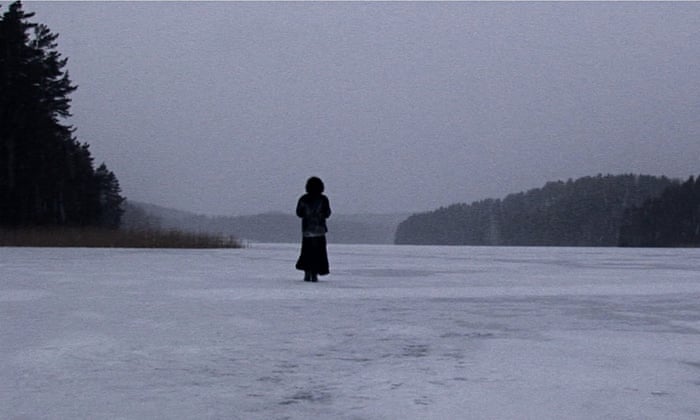Every so often, the critic witnesses a film that looks less to have been released into cinemas as to have strayed into them as might a rare butterfly: nobody quite knows how it got there, or how long it can possibly flutter around in there, but we marvel at the fact someone somewhere thought something so unusual and delicate would ever stand a chance. So it is with Sea Without Shore, a 2015 collaboration between filmmaker André Semenza and Fernanda Lippi's Zikzira Physical Dance company that aims to evoke the work of the 16th century lesbian poet Katherine Philips, and the 19th century poets Renee Vivien and Algernon Charles Swinburne through gesture and movement alone. What on earth is such a film doing on screens that might otherwise be coining it in showing the Sonic the Hedgehog movie? Isn't there a hole in the Arte or ZDF schedules it could be filling instead? (With our so-called government's planned withdrawal from the Creative Europe scheme at the end of 2020, there will of course be even fewer opportunities to see films like this out in the wild in the future: this is Brexit Britain, lest we forget, and - unless you're willing to tug a forelock and pledge middlebrow fealty to our colonial past - we don't do culture here.)
Semenza and Lippi's film requires a certain patience, and possibly a pre-existing understanding of the codified world of physical dance: for 91 minutes, it really is two pallid women (Livia Rangel and Lippi herself) bobbing and weaving wordlessly around a country estate while a narrator reads terse snippets of poetry. We're offered no immediate sense of who these women are (not even a name), and no real indication of why they're dragging themselves across the parquet floors as if they were Vileda Super-Mops. The experience is not unrewarding, though, especially as a slideshow of exceptionally expressionistic Scandie landscapes. (The film was shot in the desolate wilds of Halsingland.) These women wander lonely through forests at dawn, wrestle on frozen wasteground, and collapse in stilled meadows; in happier times, they're seen wallowing in sundappled lakes. If the heavily shaded interiors - informed by Bergman, the burdens of grief, or the obligations of living a closeted life - are less immediately striking, that's down to the rudimentary digital tech available to physical dance troupes, here documenting its subjects in slightly smeary images. Yet elsewhere, Semenza and Lippi succeed in conjuring a dark and brooding mood, a quiet occult power, which held me for an hour and a half; the Hafler Trio's ambient score and Danny and Glenn Freemantle's textured sound design pin us in each clearing as these women repel and embrace one another. A certain fragility is built into it - like those dancers as they drift out onto icy lakes, you wonder how far the film can go before something cracks - but the agonies the performers describe come to feel very real, very vivid. If nothing else, Sea Without Shore made me look into the life of a 16th century lesbian poet, a task I wasn't expecting to have on my to-do list at the start of the week.
Sea Without Shore opens in selected cinemas from today.

No comments:
Post a Comment